Experimental and Numerical Study on Performance Enhancement by Modifying the Flow Channel in the Mechanical Chamber Room of a Home Refrigerator
Abstract
Featured Application
Abstract
1. Introduction
2. Factors Affecting the Efficiency of the Refrigerator
3. Background Theory
4. Experimental Conditions
5. Numerical Analysis
5.1. Governing Equations and Numerical Solutions
5.2. Computational Domain and Grid System
5.3. Boundary Condition
6. Experimental Results and Discussion
6.1. Power Consumption and Inner Temperature of Chamber Room
6.2. Improvement of MCR Flow Line
6.3. Change in Position of the Cooling Fan
6.4. Optimization of Fan Flow Rate
7. Numerical Results and Discussion
7.1. Flow Patterns of Existing Refrigerator
7.2. Selection of Modification Models
7.3. Numerical Simulation of the Modification Models
8. Conclusions
Funding
Acknowledgments
Conflicts of Interest
References
- Bansal, P.; Vineyard, E.; Abdelaziz, O. Advances in household appliances—A review. Appl. Therm. Eng. 2011, 31, 3748–3760. [Google Scholar] [CrossRef]
- Belman-Flores, J.; Barroso-Maldonado, J.M.; Rodríguez-Muñoz, A.P.; Camacho-Vázquez, G. Enhancements in domestic refrigeration, approaching a sustainable refrigerator—A review. Renew. Sustain. Energy Rev. 2015, 51, 955–968. [Google Scholar] [CrossRef]
- James, S.J.; Evans, J. The temperature performance of domestic refrigerators. Int. J. Refrig. 1992, 15, 313–319. [Google Scholar] [CrossRef]
- Dmitriyev, V.; Pisarenko, V. Determination of optimum refrigerant charge for domestic refrigerator units. Int. J. Refrig. 1984, 7, 178–180. [Google Scholar] [CrossRef]
- Laguerre, O.; Ben Amara, S.; Moureh, J.; Flick, D. Numerical simulation of air flow and heat transfer in domestic refrigerators. J. Food Eng. 2007, 81, 144–156. [Google Scholar] [CrossRef]
- Ledesma, S.; Belman-Flores, J. Mathematical application to analyze the thermal behavior of a domestic refrigerator: Influence of the location of the shelves. Int. J. Refrig. 2017, 74, 362–370. [Google Scholar] [CrossRef]
- Rasti, M.; Hatamipour, M.S.; Aghamiri, S.F.; Tavakoli, M. Enhancement of domestic refrigerator’s energy efficiency index using a hydrocarbon mixture refrigerant. Measurement 2012, 45, 1807–1813. [Google Scholar] [CrossRef]
- Shikalgar, N.; Sapali, S. Energy and exergy analysis of a domestic refrigerator: Approaching a sustainable refrigerator. J. Therm. Eng. 2019, 5, 469–481. [Google Scholar] [CrossRef]
- Belman-Flores, J.; Gallegos-Muñoz, A.; Puente-Delgado, A. Analysis of the temperature stratification of a no-frost domestic refrigerator with bottom mount configuration. Appl. Therm. Eng. 2014, 65, 299–307. [Google Scholar] [CrossRef]
- António, C.C.; Afonso, C. Air temperature fields inside refrigeration cabins: A comparison of results from CFD and ANN modelling. Appl. Therm. Eng. 2011, 31, 1244–1251. [Google Scholar] [CrossRef]
- James, S.; Evans, J.; James, C. A review of the performance of domestic refrigerators. J. Food Eng. 2008, 87, 2–10. [Google Scholar] [CrossRef]
- Rouaud, O.; Havet, M. Computation of the airflow in a pilot scale clean room using K-ε turbulence models. Int. J. Refrig. 2002, 25, 351–361. [Google Scholar] [CrossRef]
- Kattakayam, T.A.; Srinivasan, K. Thermal performance characterization of a photovoltaic driven domestic refrigerator. Int. J. Refrig. 2000, 23, 190–196. [Google Scholar] [CrossRef]
- Jung, D.; Kim, C.-B.; Song, K.; Park, B. Testing of propane/isobutane mixture in domestic refrigerators. Int. J. Refrig. 2000, 23, 517–527. [Google Scholar] [CrossRef]
- Vineyard, E.A.; Sand, J.; Miller, W. Refrigerator-freezer energy testing with alternative refrigerants. NASA STI Recon Tech. Rep. N 1989, 89, 27037. [Google Scholar]
- Farley, K.; Alissi, M.S.; Schoenhals, R.J.; Ramadhyani, S. Effects of ambient temperature and control settings on thermal performance and energy consumption of a household refrigerator-freezer. ASHRAE Trans. 1987, 93, CONF-870620. [Google Scholar]
- 2009 ASHRAE Handbook of Fundamentals; American Society of Heating, Refrigerating and Air-Conditioning Engineers Inc.: Atlanta, GA, USA, 2009.
- Bejan, A. Convection Heat Transfer; John Wiley & Sons: Hoboken, NJ, USA, 2013. [Google Scholar]
- Cengel, Y.A.; Boles, M.A. Thermodynamics: An Engineering Approach 6th Editon (SI Units); The McGraw-Hill Companies Inc.: New York, NY, USA, 2007. [Google Scholar]
- Ashrae, P.C. ASHRAE Handbook of Fundamentals; American Society of Heating, Refrigeration and Air Conditioning Engineers Inc.: Atlanta, GA, USA, 2005. [Google Scholar]
- Amara, S.B.; Laguerre, O.; Charrier-Mojtabi, M.-C.; Lartigue, B.; Flick, D. PIV measurement of the flow field in a domestic refrigerator model: Comparison with 3D simulations. Int. J. Refrig. 2008, 31, 1328–1340. [Google Scholar] [CrossRef]
- Björk, E.; Palm, B. Performance of a domestic refrigerator under influence of varied expansion device capacity, refrigerant charge and ambient temperature. Int. J. Refrig. 2006, 29, 789–798. [Google Scholar] [CrossRef]
- Zhou, Q.; Pannock, J.; Radermacher, R. Development and testing of a high-efficiency refrigerator. ASHRAE Trans. 1994, 100, 1351–1358. [Google Scholar]
- Bayer, O.; Ruknettin, O.; Paksoy, A.; Aradag, S. CFD simulations and reduced order modeling of a refrigerator compartment including radiation effects. Energy Convers. Manag. 2013, 69, 68–76. [Google Scholar] [CrossRef]
- R. ANSYS. ANSYS CFX-Solver Theory Guide; Release 16.2; ANSYS Inc.: Canonsburg, PA, USA, 2015. [Google Scholar]
- Afonso, C.; Matos, J. The effect of radiation shields around the air condenser and compressor of a refrigerator on the temperature distribution inside it. Int. J. Refrig. 2006, 29, 1144–1151. [Google Scholar] [CrossRef]
- Fukuyo, K.; Tanaami, T.; Ashida, H. Thermal uniformity and rapid cooling inside refrigerators. Int. J. Refrig. 2003, 26, 249–255. [Google Scholar] [CrossRef]
- Hoang, M.L.; Verboven, P.; De Baerdemaeker, J.; Nicolai, B.M. Analysis of the air flow in a cold store by means of computational fluid dynamics. Int. J. Refrig. 2000, 23, 127–140. [Google Scholar] [CrossRef]
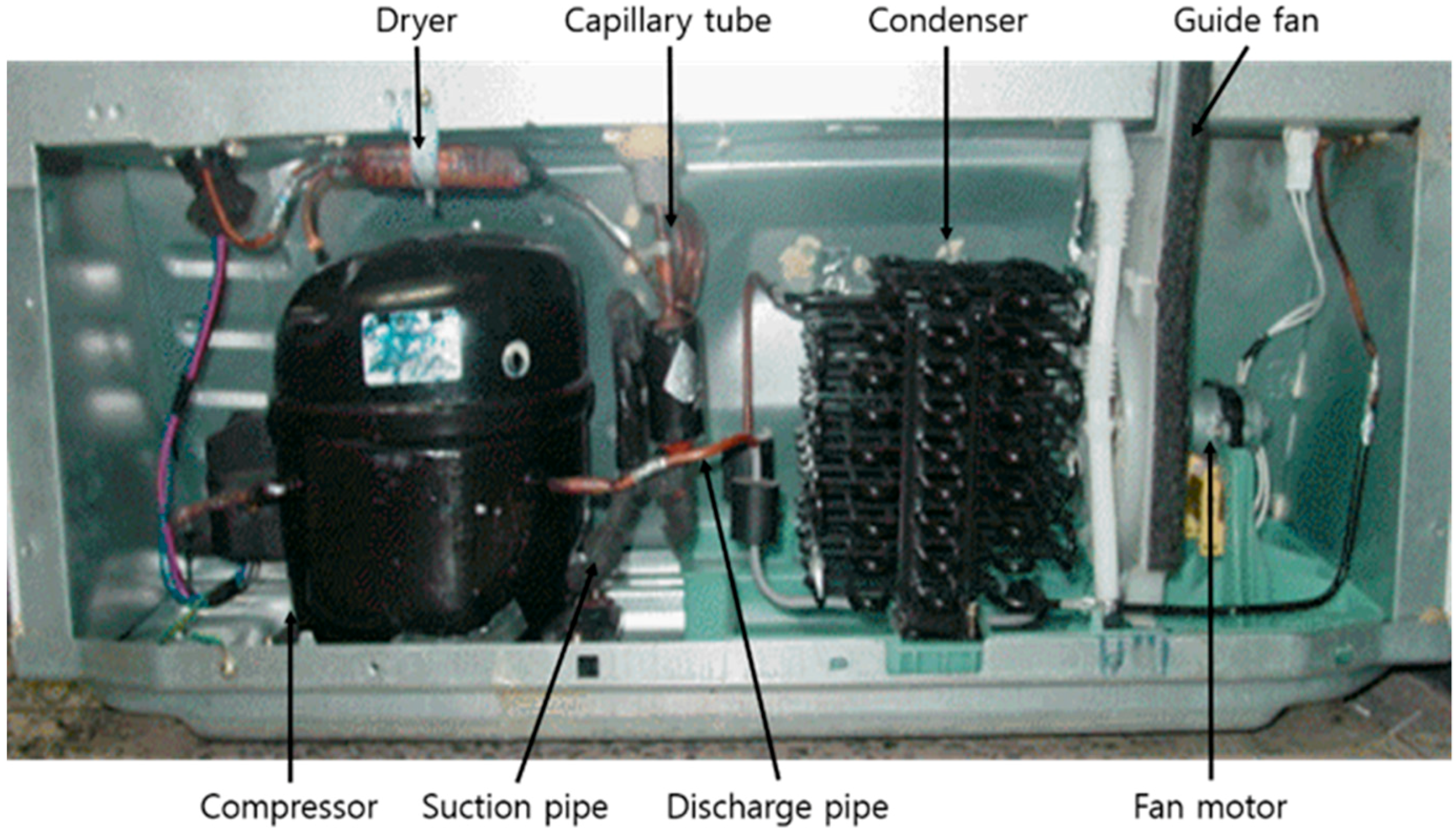
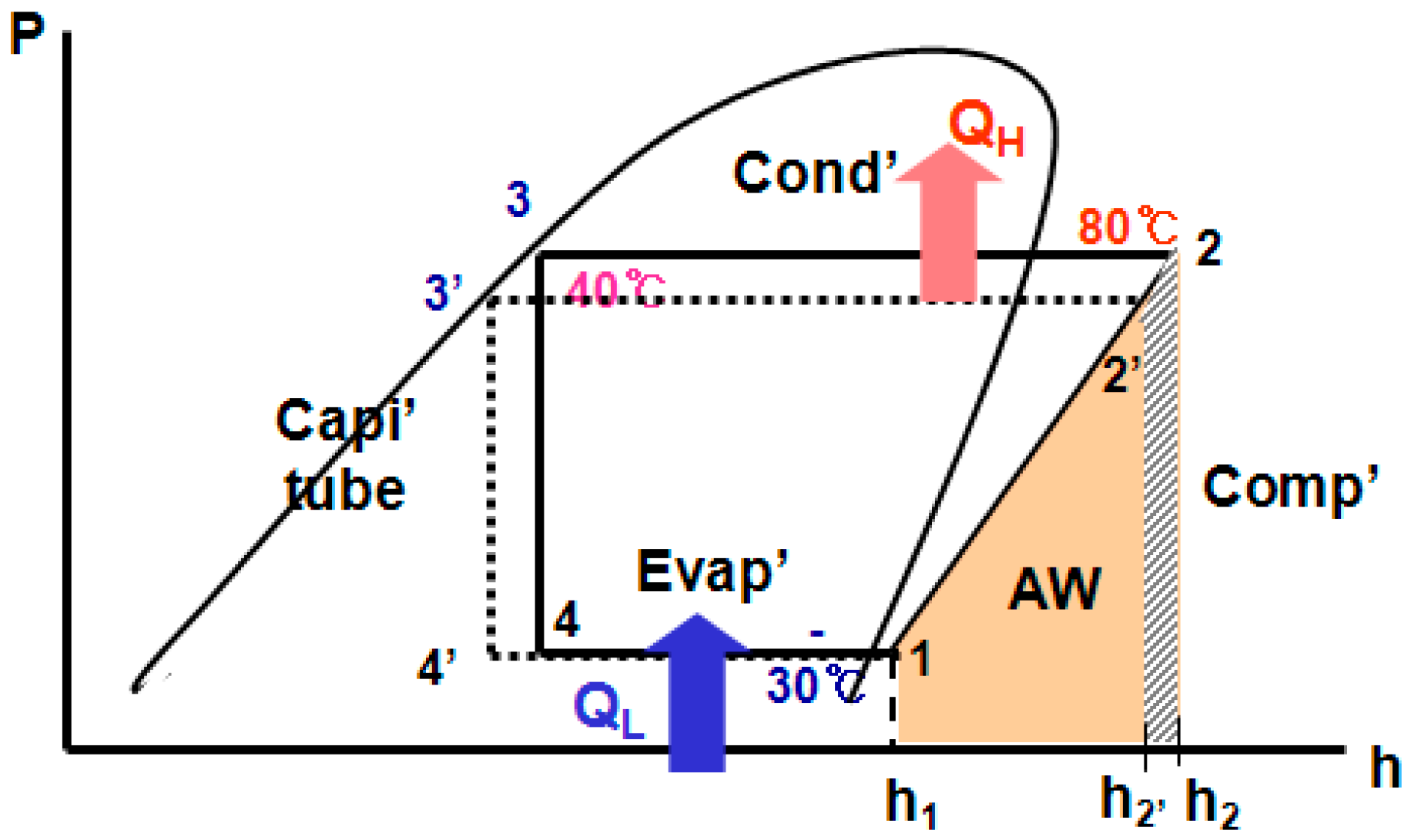
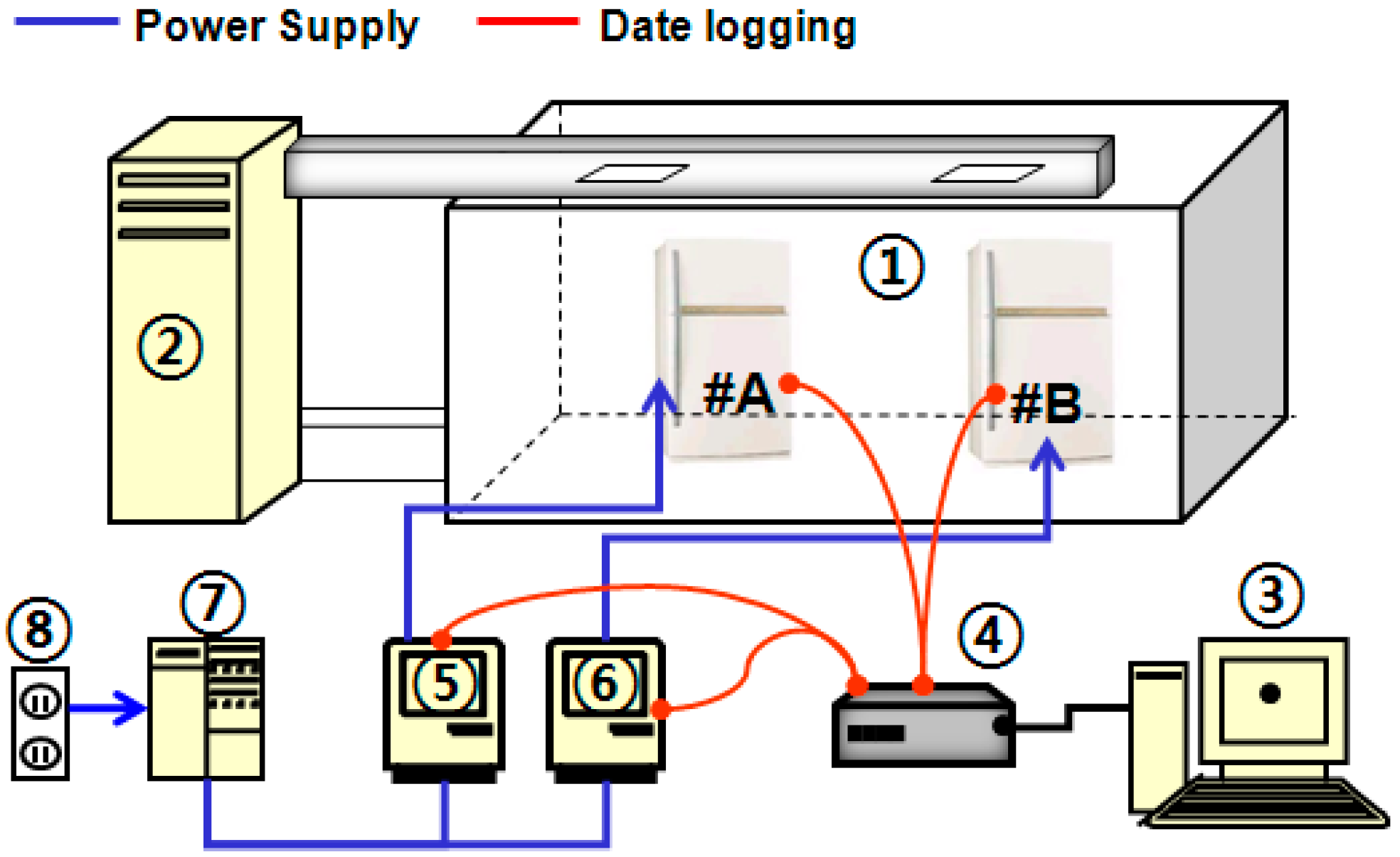
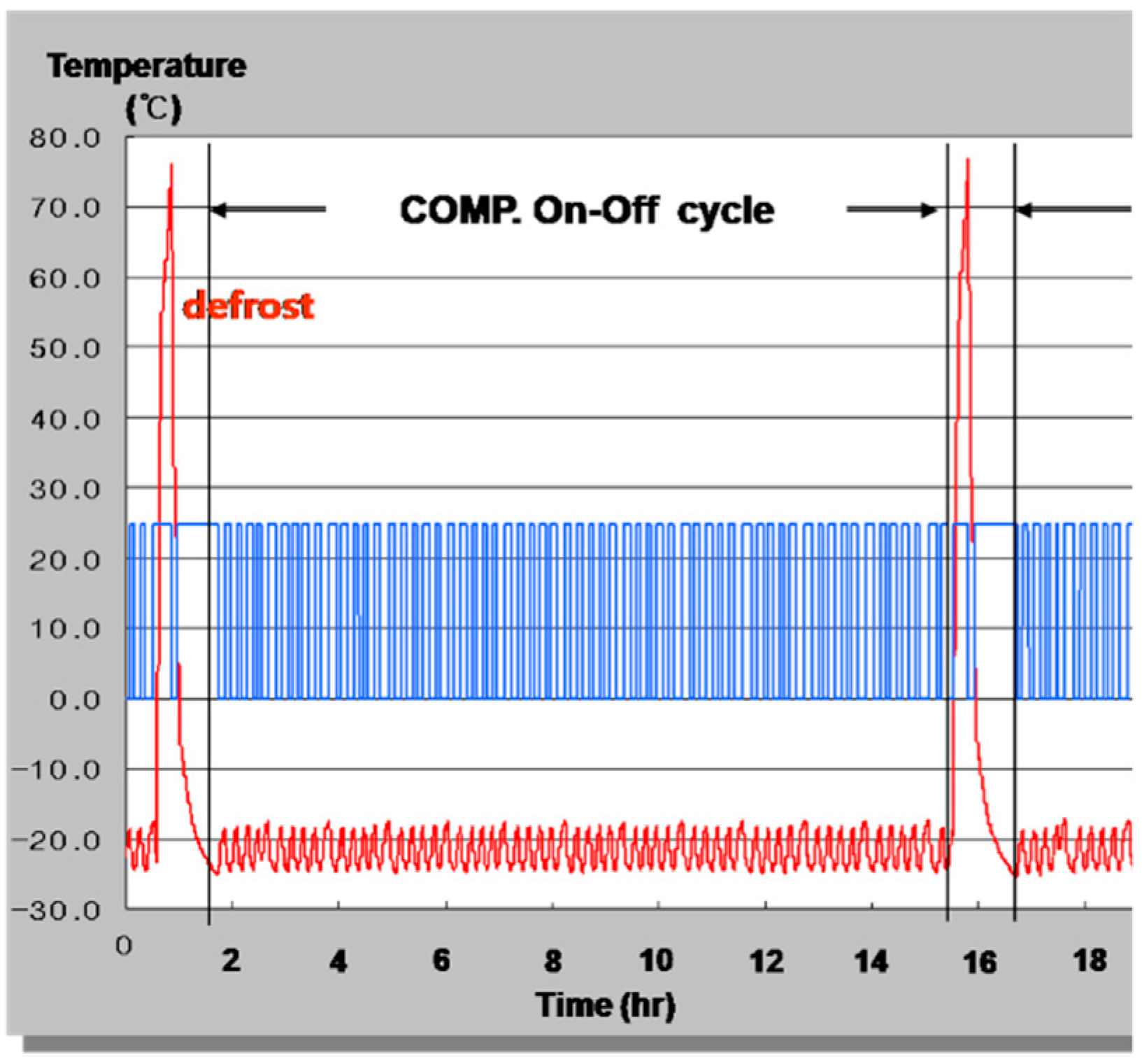

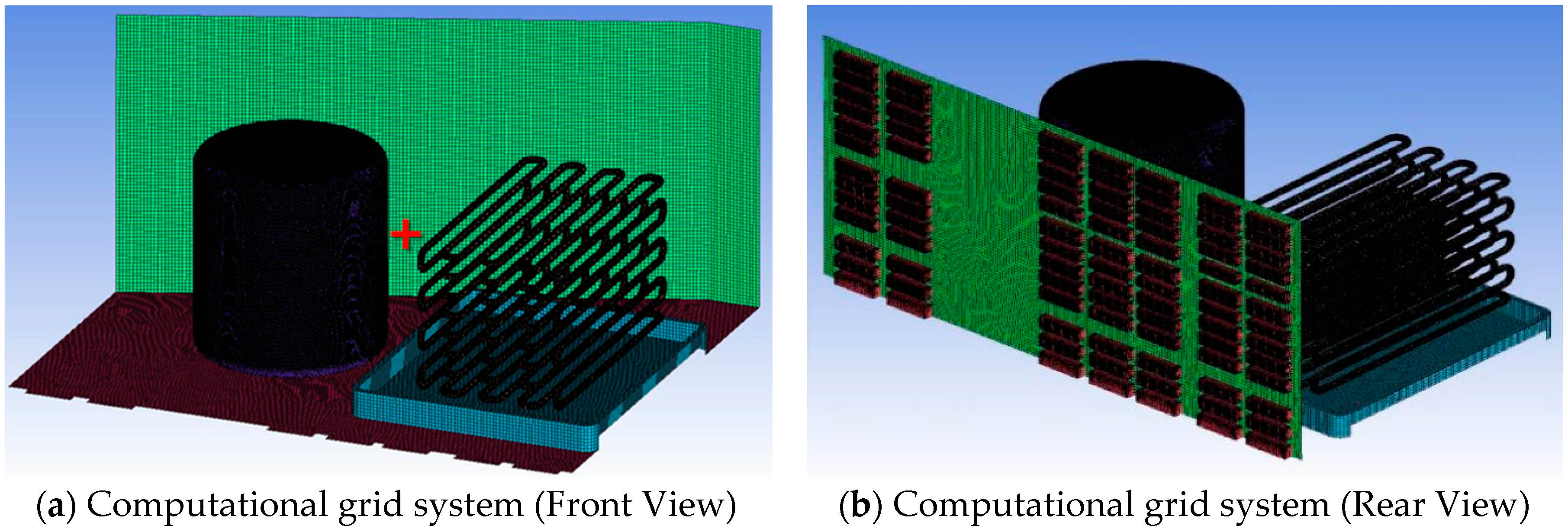
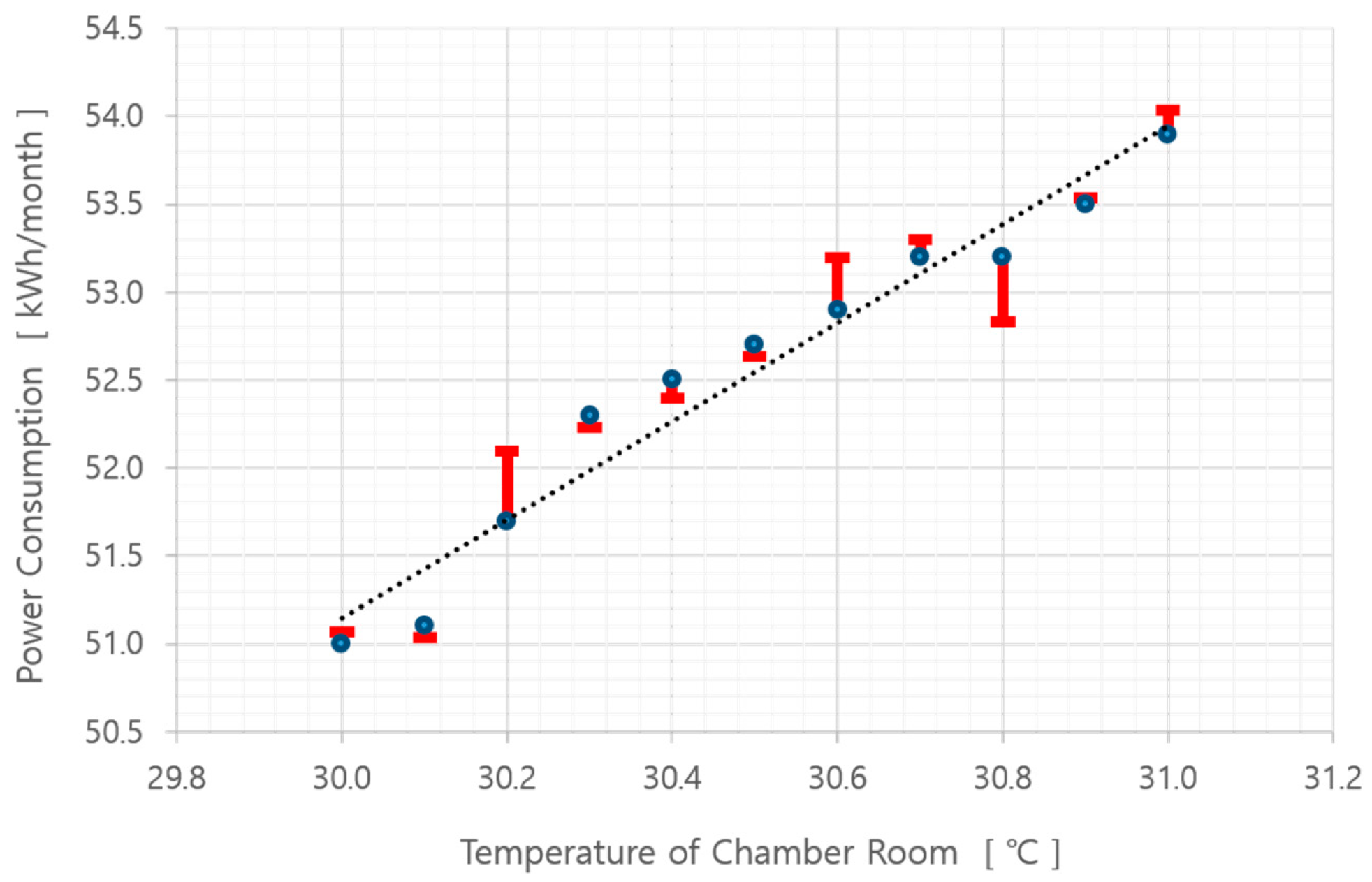
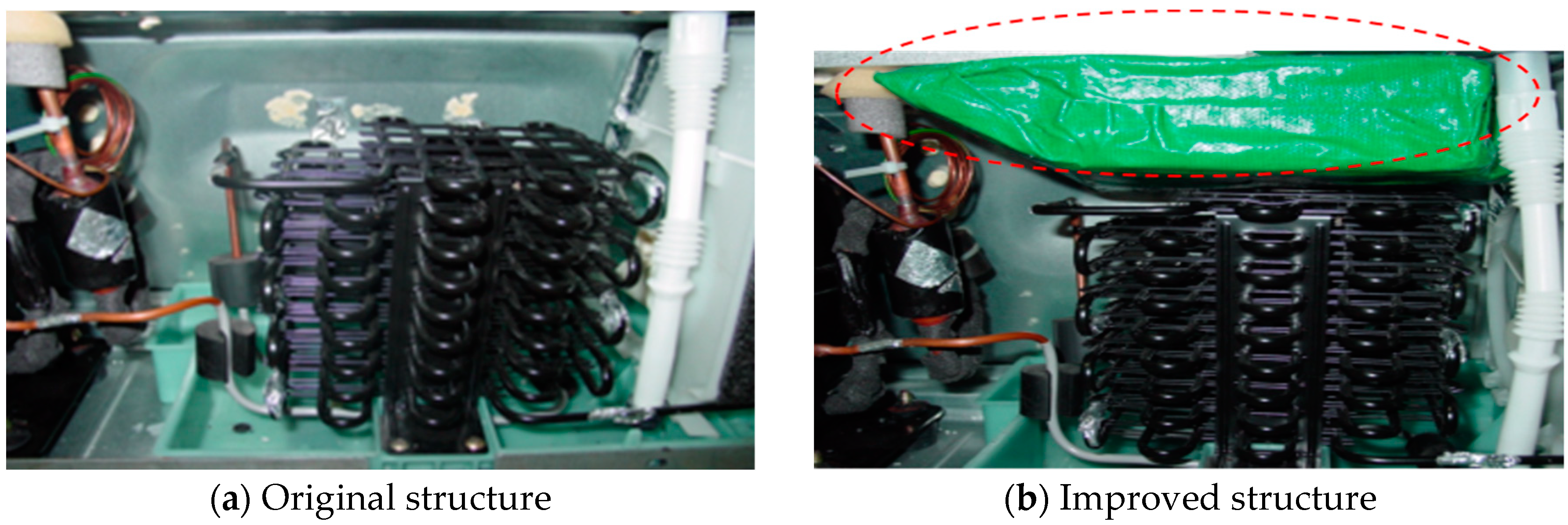
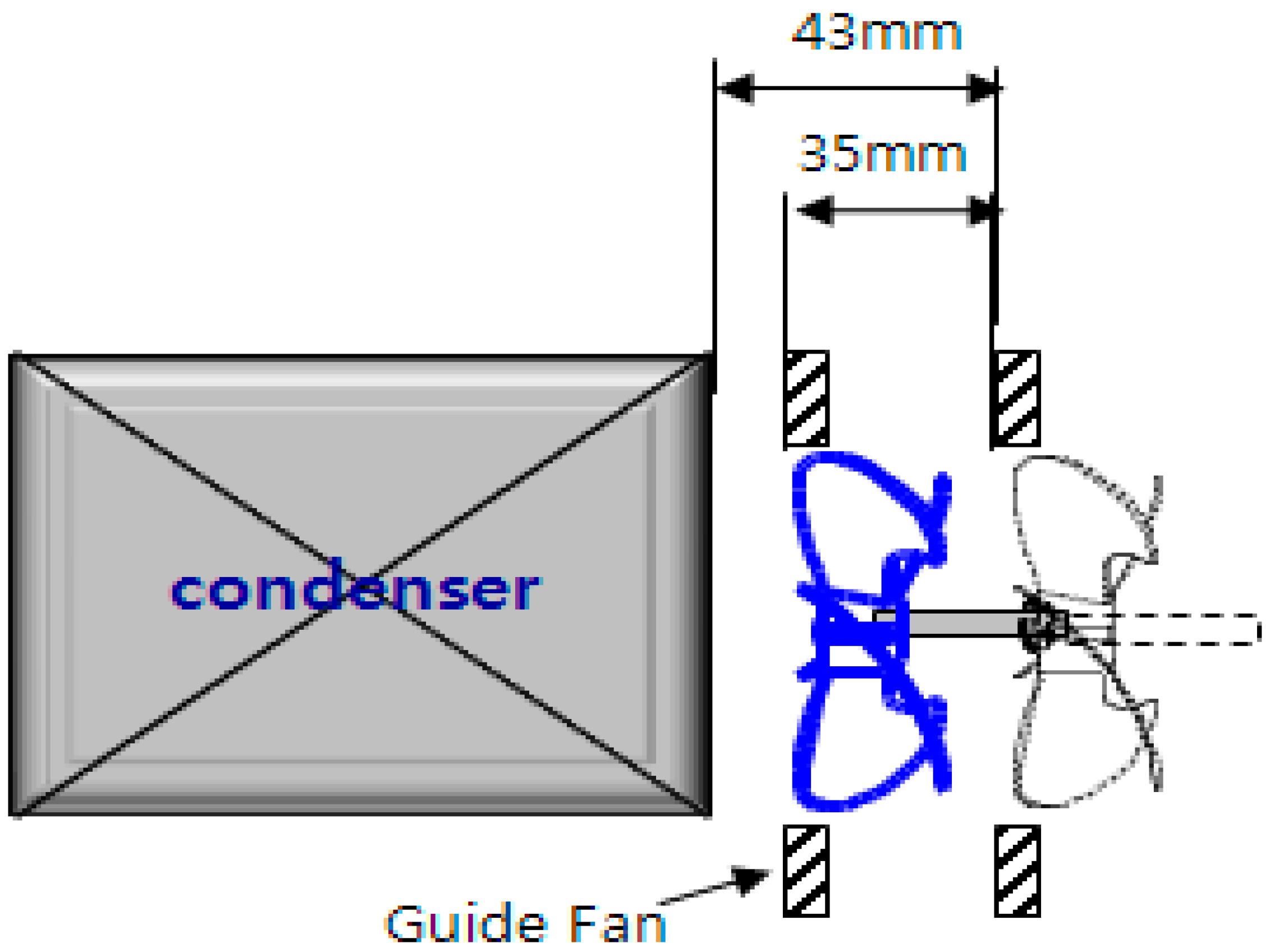
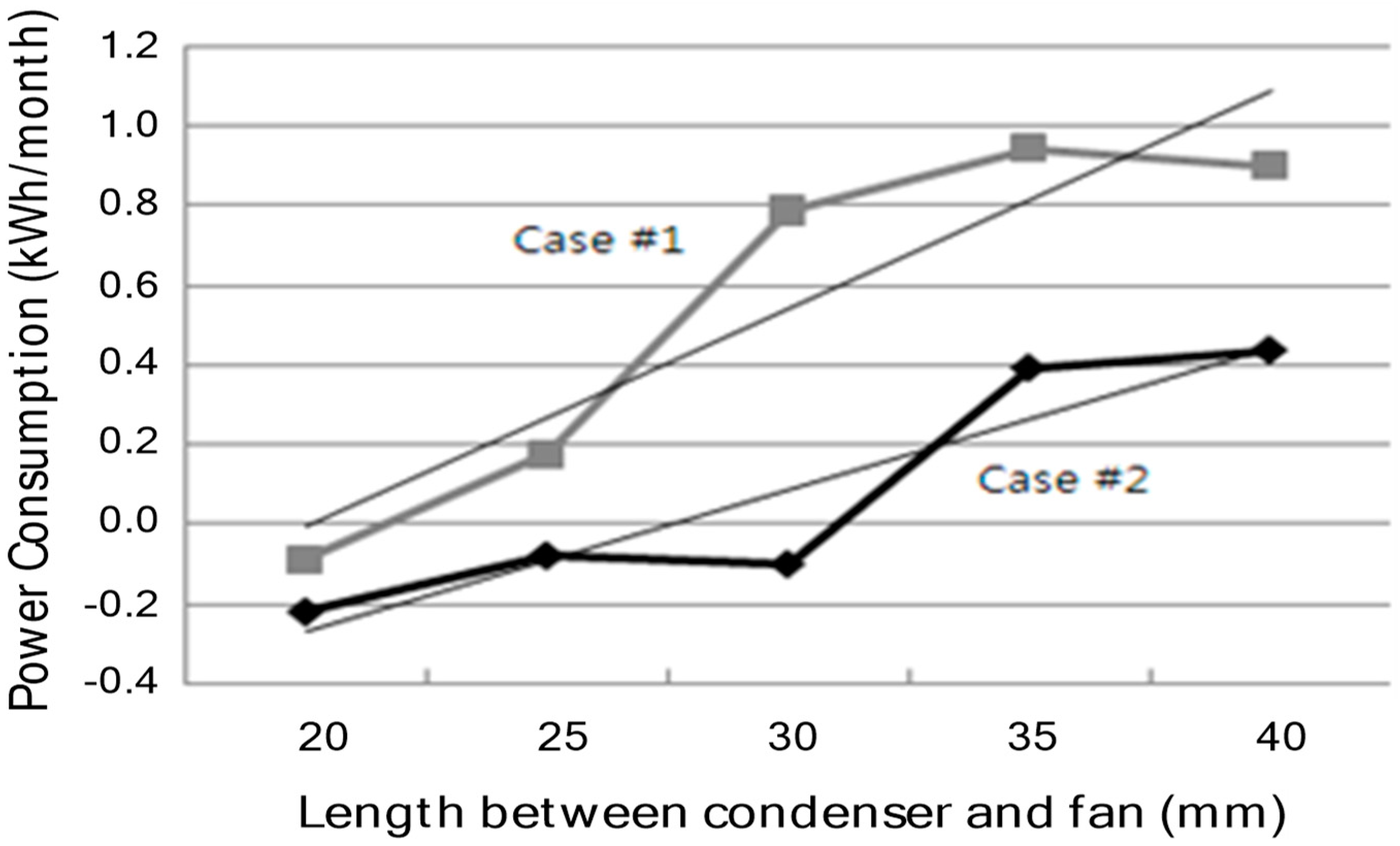
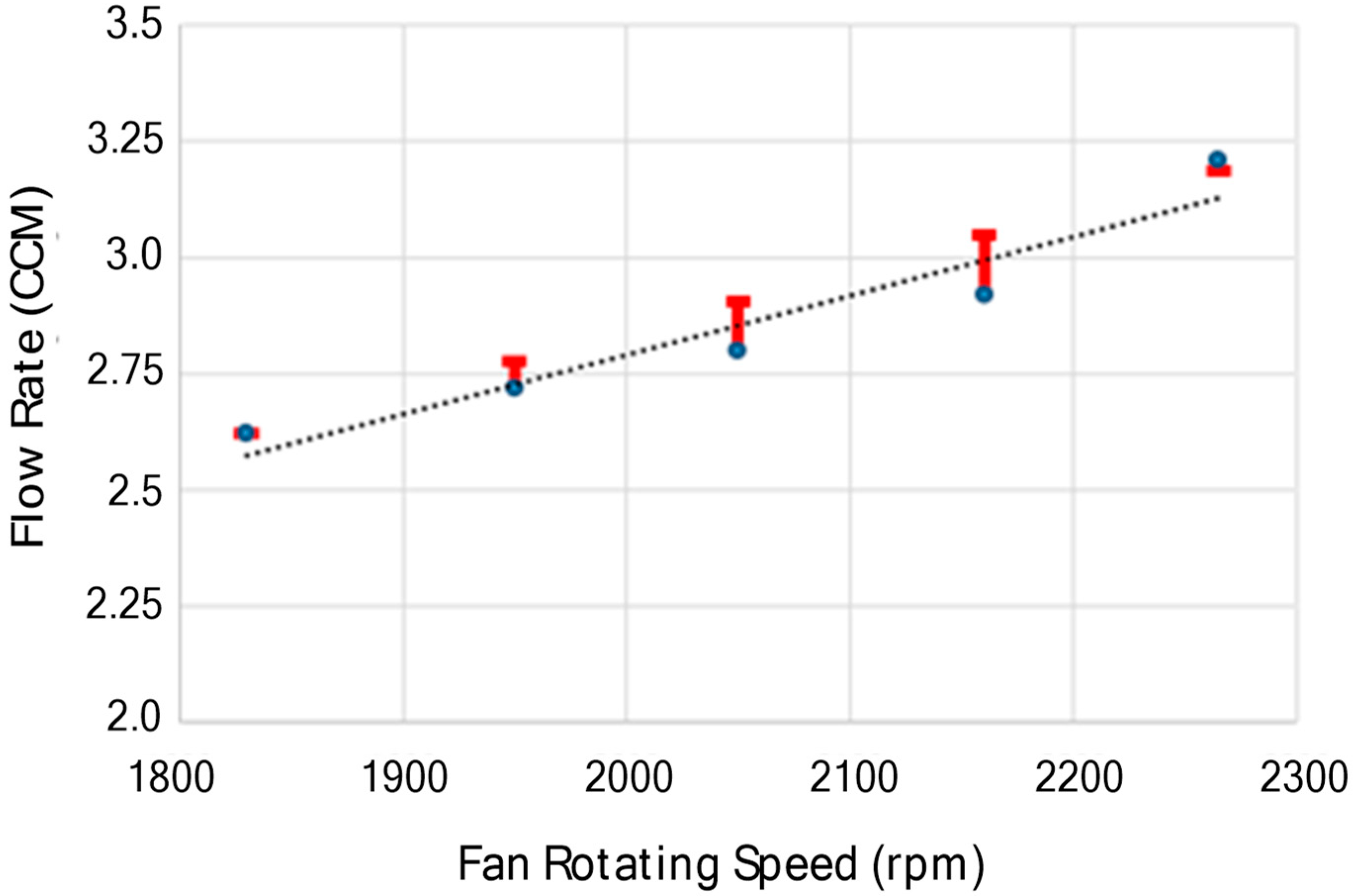
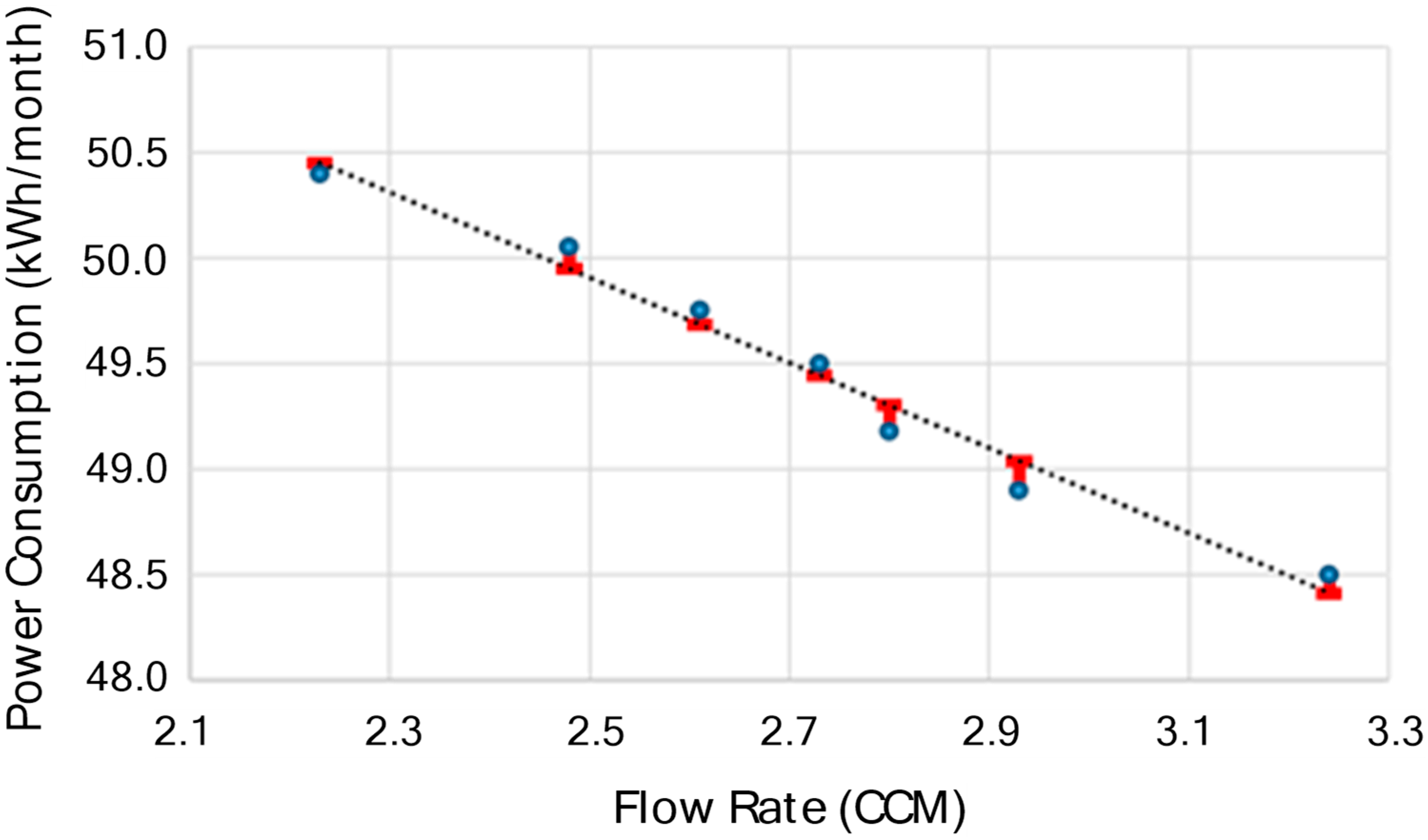
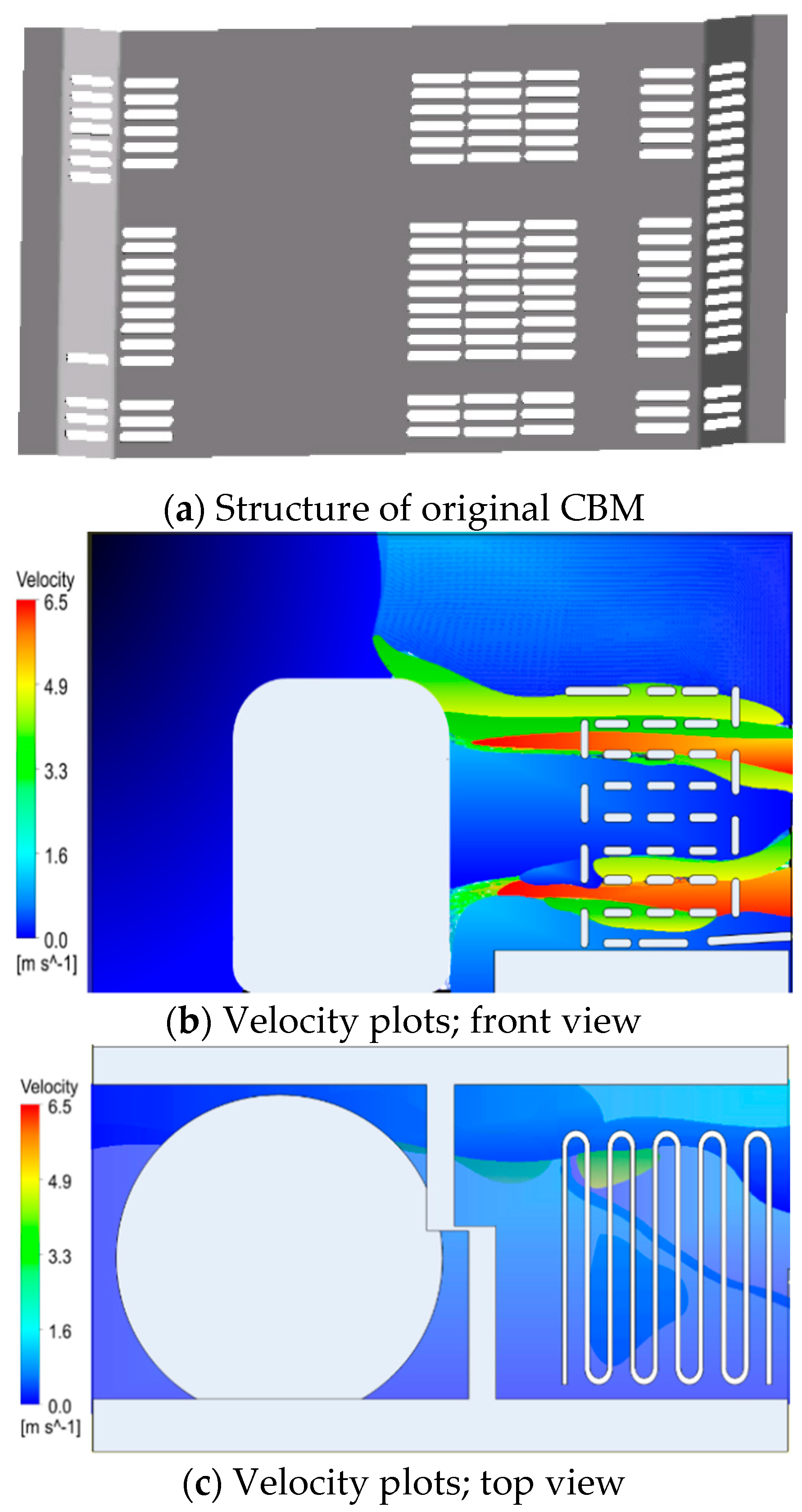

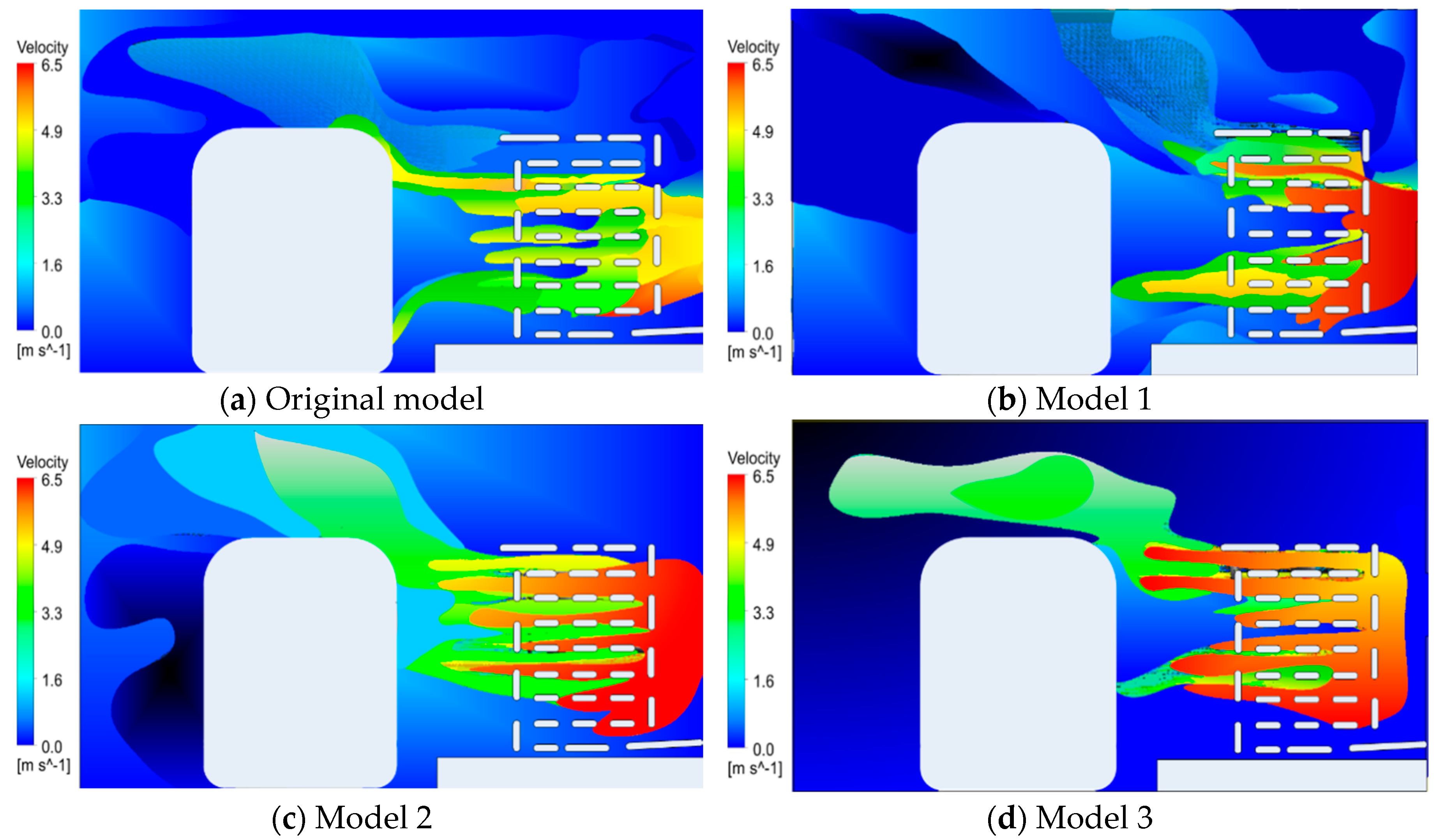
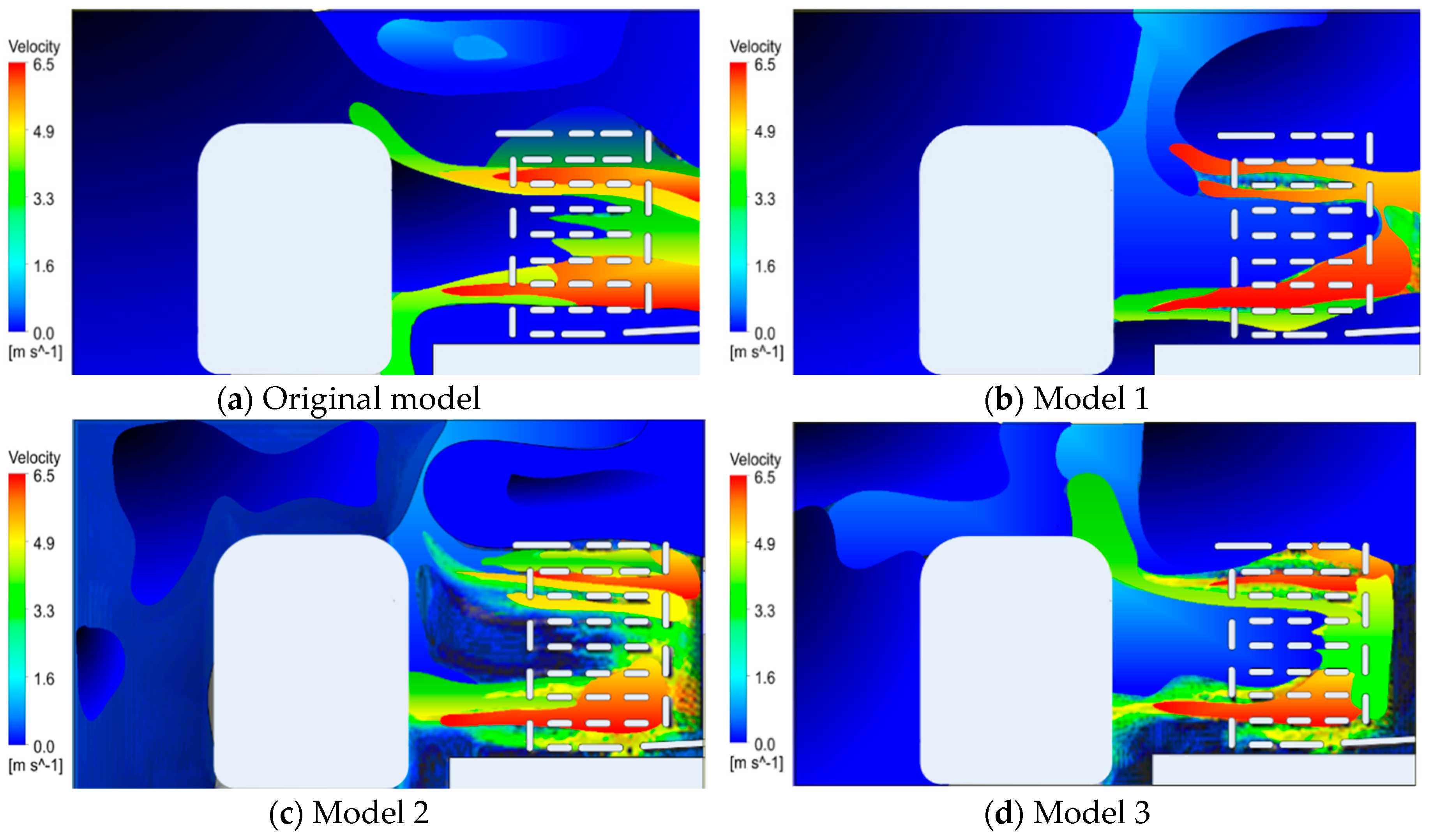
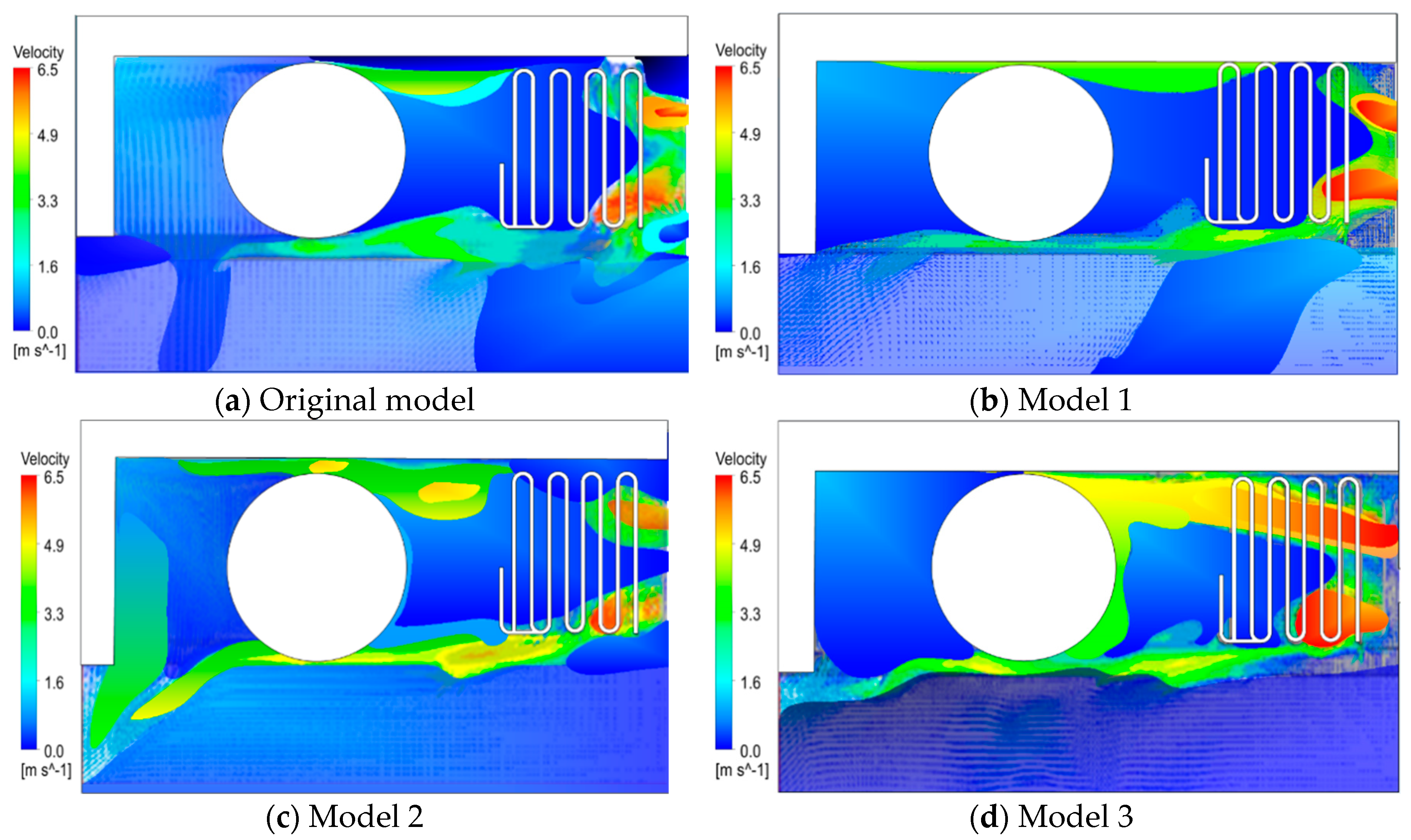
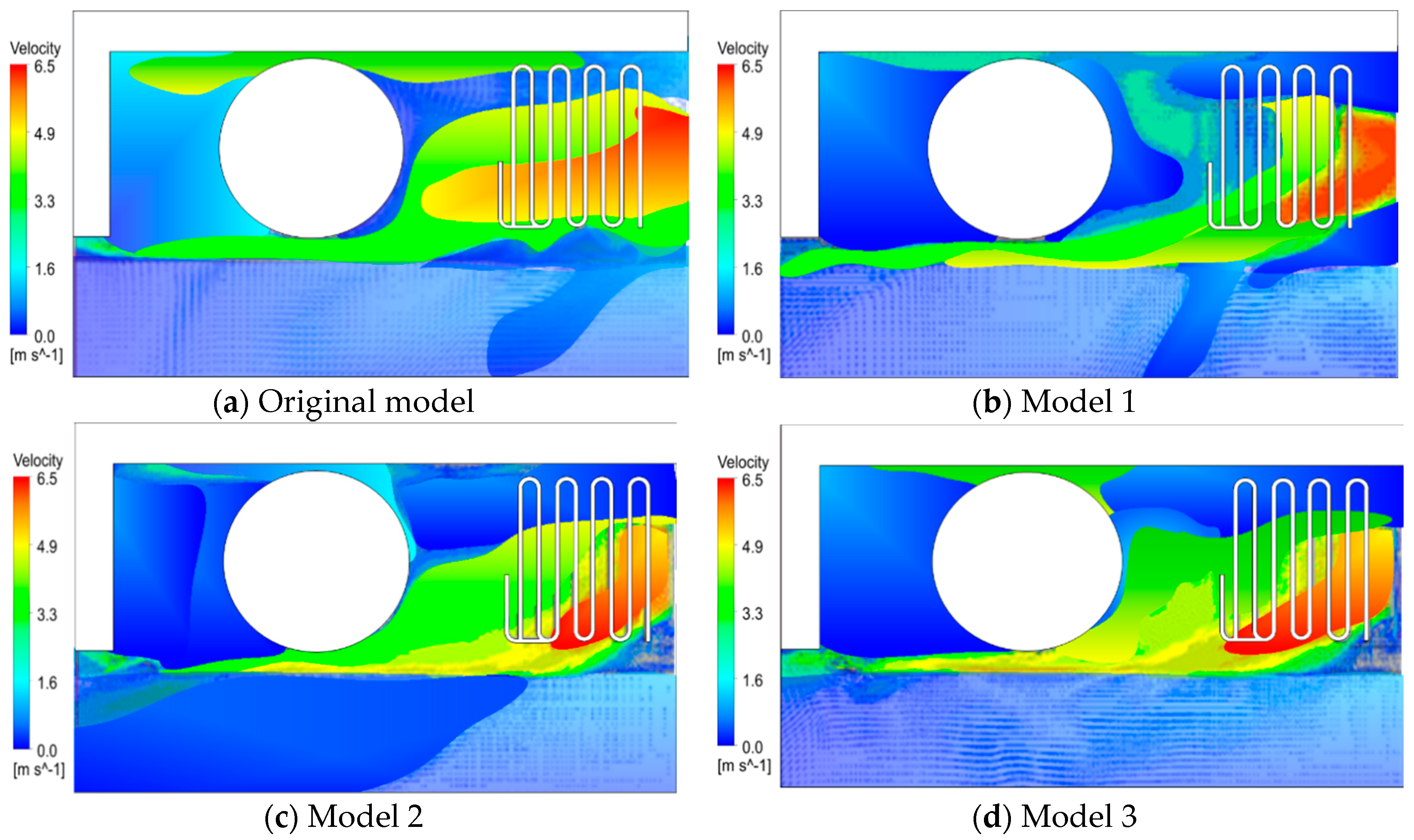
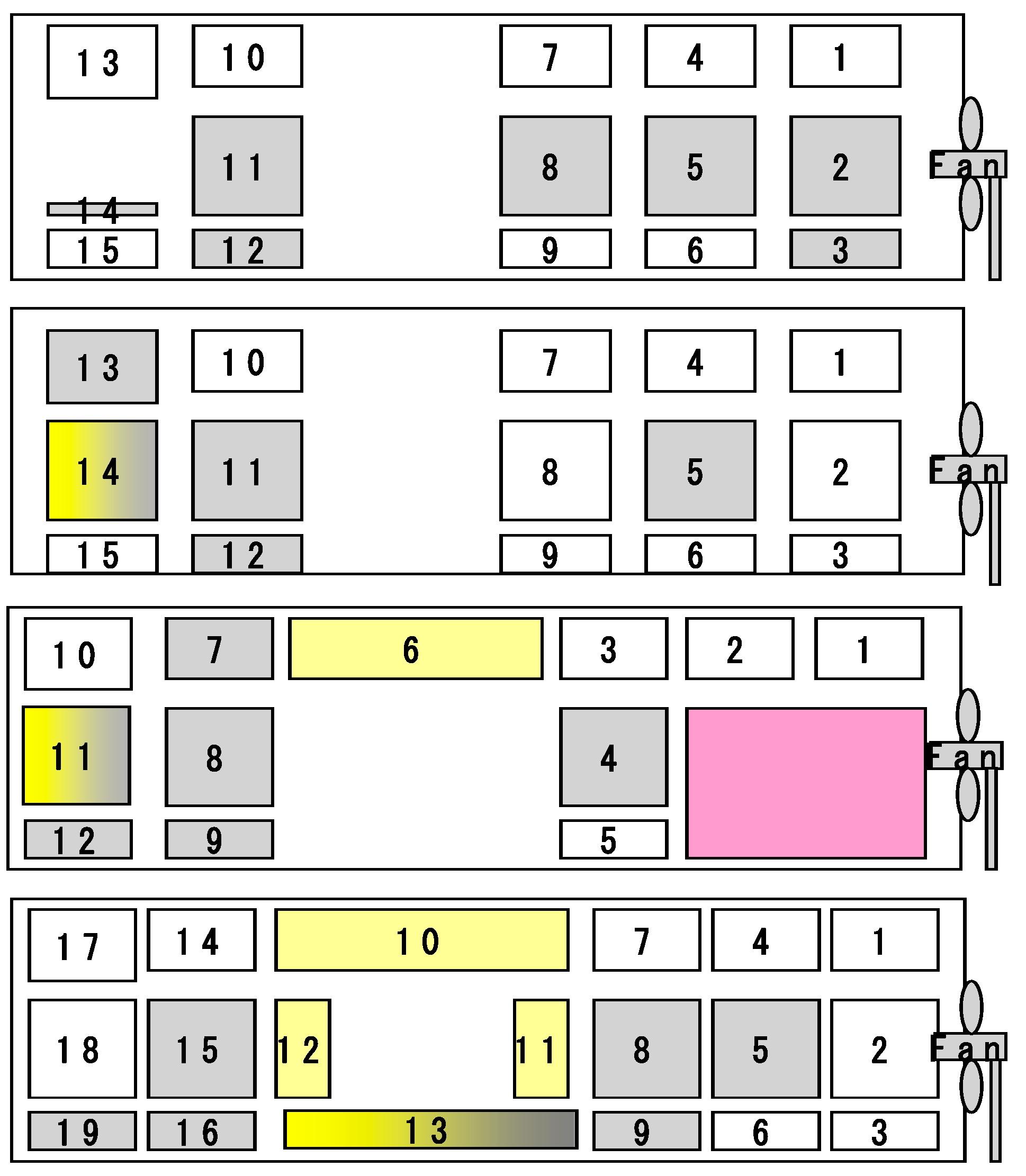
| No. | Name | Specifications |
|---|---|---|
| 1 | Chamber room | Temperature 30 1 , Humidity 75 5% |
| 2 | Chamber controller | Temperature 10–35, Humidity 60–95% |
| 3 | Computer | Workstation, 16 Core, 128 Gb |
| 4 | Data logger | DS-600 (YOGAWA 60 Channel), Thermocouple (T-type) |
| 5 | Power meter for #A | WT-200 (YOKOGAWA) |
| 6 | Power meter for #B | WT-200 (YOKOGAWA) |
| 7 | Automatic Voltage Regulator (AVR) | 3KVA, Output V: 220 V 2% |
| 8 | Power supply | Voltage: 220 V, Frequency: 60 Hz |
| Item | Power Original (kWh/Month) | Power Modified (kWh/Month) | Reduction (%) | |
|---|---|---|---|---|
| Case | ||||
| Case #1 | 50.1 | 49.7 | 0.8 | |
| Case #2 | 51.4 | 51.0 | 0.7 | |
| Outlet. | Existing Model | Model 1 | Model 2 | Model 3 |
|---|---|---|---|---|
| 1 | 0.60 | 0.73 | 0.22 | 0.28 |
| 2 | 1.70 | 0.33 | 0.22 | 0.47 |
| 3 | 1.25 | 0.37 | 0.22 | 0.28 |
| 4 | 0.51 | 0.72 | 1.53 | 0.28 |
| 5 | 1.15 | 1.47 | 0.93 | 1.23 |
| 6 | 0.58 | 0.65 | 0.97 | 0.55 |
| 7 | 0.36 | 0.65 | 1.45 | 0.28 |
| 8 | 1.39 | 0.90 | 1.47 | 2.31 |
| 9 | 0.36 | 0.94 | 1.59 | 1.18 |
| 10 | 0.88 | 0.82 | 0.91 | 0.33 |
| 11 | 1.36 | 0.55 | 1.06 | 0.54 |
| 12 | 1.75 | 2.08 | 1.29 | 0.54 |
| 13 | 0.65 | 1.09 | 2.03 | |
| 14 | 1.83 | 1.03 | 0.97 | |
| 15 | 1.03 | 0.27 | 2.05 | |
| 16 | 2.37 | |||
| 17 | 0.89 | |||
| 18 | 0.89 | |||
| 19 | 1.82 |
| Item | Power Recent Model (kWh/Month) | Power Modified Model (kWh/Month) | Reduction (%) | |
|---|---|---|---|---|
| Case | ||||
| Case #1 | 49.9 | 49.3 | 1.3 | |
| Case #2 | 52.8 | 52.3 | 1.1 | |
© 2020 by the author. Licensee MDPI, Basel, Switzerland. This article is an open access article distributed under the terms and conditions of the Creative Commons Attribution (CC BY) license (http://creativecommons.org/licenses/by/4.0/).
Share and Cite
Kim, D.K. Experimental and Numerical Study on Performance Enhancement by Modifying the Flow Channel in the Mechanical Chamber Room of a Home Refrigerator. Appl. Sci. 2020, 10, 6284. https://doi.org/10.3390/app10186284
Kim DK. Experimental and Numerical Study on Performance Enhancement by Modifying the Flow Channel in the Mechanical Chamber Room of a Home Refrigerator. Applied Sciences. 2020; 10(18):6284. https://doi.org/10.3390/app10186284
Chicago/Turabian StyleKim, Dong Kyun. 2020. "Experimental and Numerical Study on Performance Enhancement by Modifying the Flow Channel in the Mechanical Chamber Room of a Home Refrigerator" Applied Sciences 10, no. 18: 6284. https://doi.org/10.3390/app10186284
APA StyleKim, D. K. (2020). Experimental and Numerical Study on Performance Enhancement by Modifying the Flow Channel in the Mechanical Chamber Room of a Home Refrigerator. Applied Sciences, 10(18), 6284. https://doi.org/10.3390/app10186284




